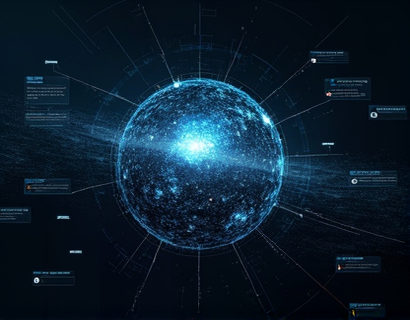Maximize Your Multi-Channel Announcements: A Strategic Guide for Businesses and Audiences
In today's fast-paced digital landscape, businesses and individuals face the challenge of effectively communicating with their audience across multiple channels. Multi-channel announcements are crucial for ensuring that your message reaches as many people as possible, enhancing visibility, and driving engagement. This guide provides expert strategies to streamline your publishing processes and maximize the impact of your announcements. Whether you are a business owner or an individual looking to connect with a broader audience, the insights here will help you navigate the complexities of multi-channel communication.
Understanding Multi-Channel Communication
Multi-channel communication involves using various platforms and channels to reach your audience. These channels can include social media platforms, email newsletters, websites, blogs, messaging apps, and more. Each channel has its unique characteristics and audience demographics, making it essential to tailor your message and approach for each platform. The goal is to create a cohesive and consistent message that resonates with your audience regardless of the channel they engage with.
Benefits of Multi-Channel Announcements
Implementing a multi-channel strategy offers numerous benefits. Firstly, it increases the likelihood of reaching your target audience, as different people consume information through different channels. For instance, while some may prefer social media, others might rely on email or news websites. By covering multiple bases, you ensure that your message doesn't get lost in the noise.
Secondly, multi-channel announcements enhance credibility and trust. When a brand consistently communicates through various channels, it builds a reputation for reliability and professionalism. Audiences are more likely to engage with and trust brands that maintain a presence across multiple platforms.
Lastly, a well-executed multi-channel strategy can drive higher engagement and conversion rates. By providing multiple touchpoints, you give your audience more opportunities to interact with your content, whether it's through sharing, commenting, or making a purchase.
Challenges of Multi-Channel Communication
While the benefits are clear, implementing a multi-channel strategy is not without its challenges. One of the primary hurdles is coordinating and managing content across different platforms. Each channel has its own set of best practices, content formats, and audience expectations. This can lead to a fragmented approach if not managed properly.
Another challenge is ensuring consistency in messaging. With multiple channels, there's a risk of sending out inconsistent or conflicting information, which can confuse your audience and dilute your brand message. Maintaining a unified voice and message across all channels requires careful planning and execution.
Resource allocation is also a significant consideration. Developing and publishing content across multiple channels can be time-consuming and resource-intensive. Small businesses and individuals, in particular, may struggle to dedicate the necessary resources to a multi-channel strategy without compromising on quality.
Strategies for Streamlining Multi-Channel Publishing
To overcome these challenges, it's essential to adopt strategies that streamline your multi-channel publishing process. Here are some key approaches to consider:
- Centralized Content Management: Use a centralized content management system (CMS) to create, store, and publish content across all your channels. This ensures that you have a single source of truth for your content, reducing the risk of inconsistencies and saving time.
- Automated Scheduling Tools:
- Content Repurposing:
- Audience Segmentation:
- Cross-Promotion:
Leverage automated scheduling tools to plan and publish content in advance. These tools allow you to schedule posts on social media, email newsletters, and other channels without constant manual intervention. This not only saves time but also ensures that your content is published at optimal times when your audience is most active.
Maximize the value of your content by repurposing it across different channels. For example, turn a blog post into a series of social media posts, infographics, or video summaries. This approach helps you reach different segments of your audience with minimal additional effort.
Segment your audience based on their preferences and behaviors to tailor your messages accordingly. This personalized approach increases engagement and relevance, as each segment receives content that resonates with their interests and needs.
Utilize cross-promotion to drive traffic and engagement across channels. For instance, include links to your social media profiles in your email newsletters and vice versa. This creates a network effect, where the strength of one channel enhances the visibility of others.
Enhancing Message Visibility
To ensure your announcements are seen and heard, focus on strategies that enhance message visibility:
Firstly, optimize your content for search engines (SEO). Use relevant keywords, meta descriptions, and alt text for images to improve your content's discoverability on search engines. This is particularly important for channels like websites and blogs, where organic search plays a significant role in driving traffic.
Secondly, leverage the unique features of each channel to capture attention. For example, use eye-catching visuals and videos on Instagram and TikTok, and engage in real-time conversations on Twitter. Tailoring your content to the strengths of each platform increases its impact and reach.
Thirdly, timing is crucial. Analyze your audience's online behavior to determine the best times to post on each channel. Tools like Google Analytics and social media insights can provide valuable data on when your audience is most active, allowing you to schedule your announcements for maximum visibility.
Lastly, encourage sharing and engagement. Design your content to be shareable by making it easy for users to share on their own networks. Incorporate calls-to-action and create content that sparks conversation, such as polls, questions, or interactive posts.
Measuring Success in Multi-Channel Communication
To evaluate the effectiveness of your multi-channel announcements, it's essential to set clear goals and track key performance indicators (KPIs). Common KPIs include engagement rates, reach, click-through rates, and conversion rates. Use analytics tools to monitor these metrics across all channels and adjust your strategy based on the data.
It's also important to conduct regular audits of your multi-channel strategy to identify what's working and what isn't. This might involve A/B testing different content types, posting times, or messaging approaches to see which resonate best with your audience.
Feedback from your audience can provide valuable insights as well. Encourage comments, reviews, and direct feedback to understand their preferences and pain points. This qualitative data complements quantitative metrics and helps refine your communication strategy over time.
Conclusion
Maximizing your multi-channel announcements requires a strategic and thoughtful approach. By understanding the benefits and challenges, streamlining your publishing processes, enhancing message visibility, and measuring success, you can effectively connect with your audience across various platforms. Remember, the key to successful multi-channel communication is consistency, relevance, and adaptability. With the right strategies in place, you can ensure that your announcements not only reach a wider audience but also drive meaningful engagement and results.










































